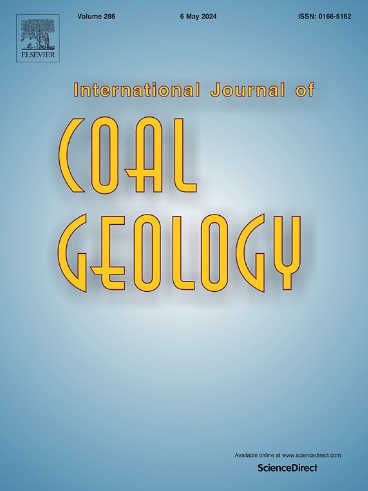Characteristics of in-situ stress field of coalbed methane reservoir in the eastern margin of Ordos basin
IF 5.7
2区 工程技术
Q2 ENERGY & FUELS
引用次数: 0
Abstract
The eastern margin of the Ordos Basin in China holds substantial coalbed methane resources. Nevertheless, coalbed methane production in this region is significantly constrained due to the unclear characteristics of the in-situ stress field within the coal reservoirs. Drawing on extensive coal seam test data, including well testing and hydraulic fracturing, and uses hydraulic fracturing calculation methods, this study conducts a comparative analysis of the in-situ stress characteristics across various CBM blocks in the region. Results indicate that the in-situ stress of the coal reservoirs along the eastern margin of the Ordos Basin predominantly exhibits medium-high stress, with stress levels higher in the south and lower in the north. The stress field is dominated by the inverse fault stress field () in the north while in the south, it is characterized by a normal fault stress field (). The in-situ stress characteristics of the coal seams are primarily governed by burial depth and local structural factors, with the three principal stresses showing a strong linear positive correlation with burial depth. The vertical stress field distinctly exhibits a “three-zoned” distribution. At a depth of 750 m, the in-situ stress relationship is , indicating that the coal reservoir is predominantly under compressive stress. At depths between 750 and 1500 m, the coal seam stress state follows the relationship , transitioning into a stress regime characteristic of a transition zone. At a depth of 1500 m, the in-situ stress relationship is , and the coal reservoir is predominantly characterized by tensile stress. Despite the relatively deep burial depth of the coal seams in the Hancheng block, its location within the Tongchuan-Hancheng fault zone, where north-south faulting is significantly developed, causes substantial local structural effects. As a result, the coal seam stress field in this area remains dominated by reverse faulting.
鄂尔多斯盆地东缘煤层气储层原位应力场特征
中国鄂尔多斯盆地东缘蕴藏着丰富的煤层气资源。然而,由于煤储层内地应场特征不明确,该地区煤层气产量受到很大限制。利用广泛的试井、水力压裂等煤层试验资料,采用水力压裂计算方法,对比分析了该地区各煤层气区块的地应力特征。结果表明:鄂尔多斯盆地东缘煤系储层地应力以中高应力为主,南高北低;北应力场以逆断层应力场(σH>σV>σh)为主,南应力场以正断层应力场(σV>σH>σh)为主。煤层地应力特征主要受埋深和局部构造因素的支配,三种主应力与埋深呈较强的线性正相关关系。垂直应力场呈明显的“三带”分布。在750 m处,地应力关系为σH>;σV>σh,表明煤储层以压应力为主。在750 ~ 1500 m深度,煤层应力状态遵循σH≈σV>; σH的关系,过渡到一个过渡带的应力状态。在1500 m处,地应力关系为σV>;σH>σh,煤储层以拉应力为主;虽然汉城地块煤层埋深较深,但由于其位于铜川-汉城断裂带内,南北断裂明显发育,局部构造影响较大。因此,本区煤层应力场仍以逆断裂为主。
本文章由计算机程序翻译,如有差异,请以英文原文为准。
求助全文
约1分钟内获得全文
求助全文
来源期刊

International Journal of Coal Geology
工程技术-地球科学综合
CiteScore
11.00
自引率
14.30%
发文量
145
审稿时长
38 days
期刊介绍:
The International Journal of Coal Geology deals with fundamental and applied aspects of the geology and petrology of coal, oil/gas source rocks and shale gas resources. The journal aims to advance the exploration, exploitation and utilization of these resources, and to stimulate environmental awareness as well as advancement of engineering for effective resource management.
 求助内容:
求助内容: 应助结果提醒方式:
应助结果提醒方式:


